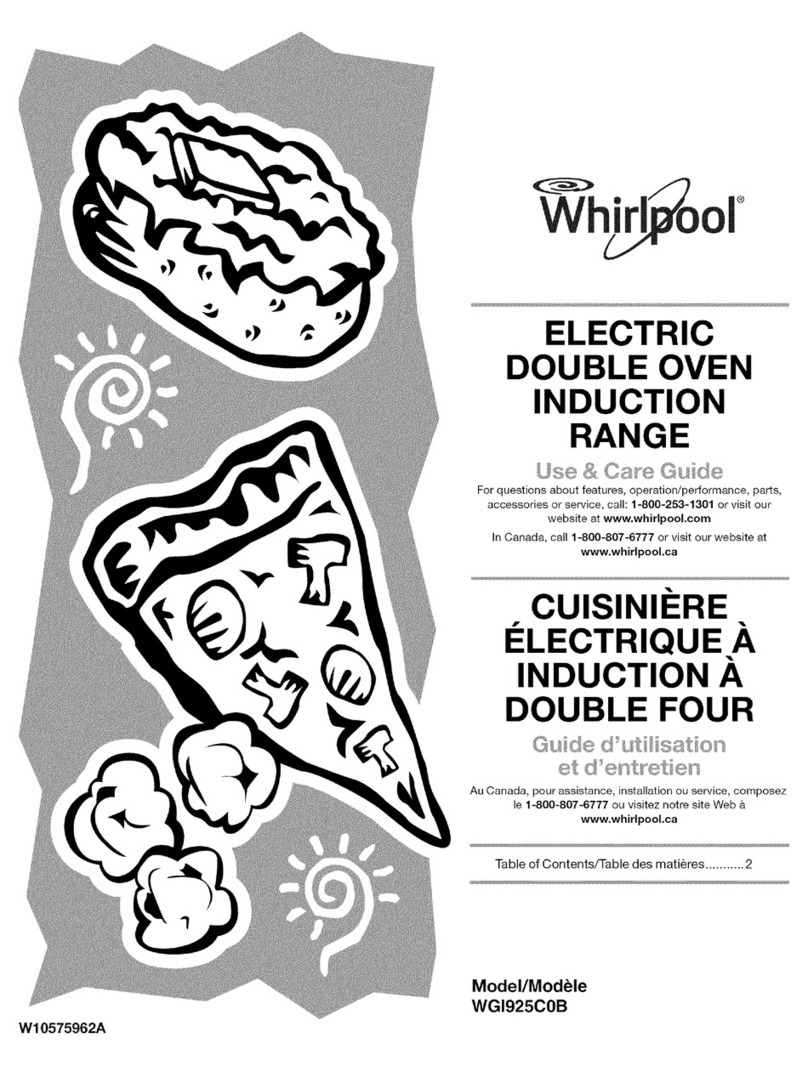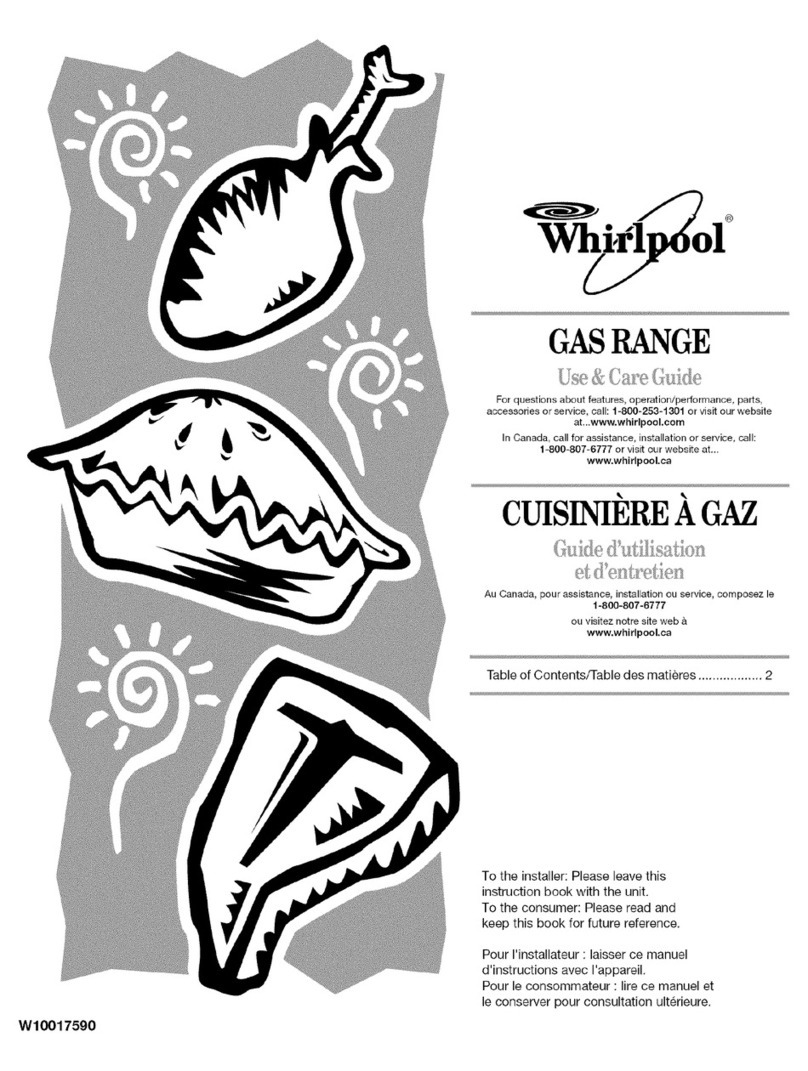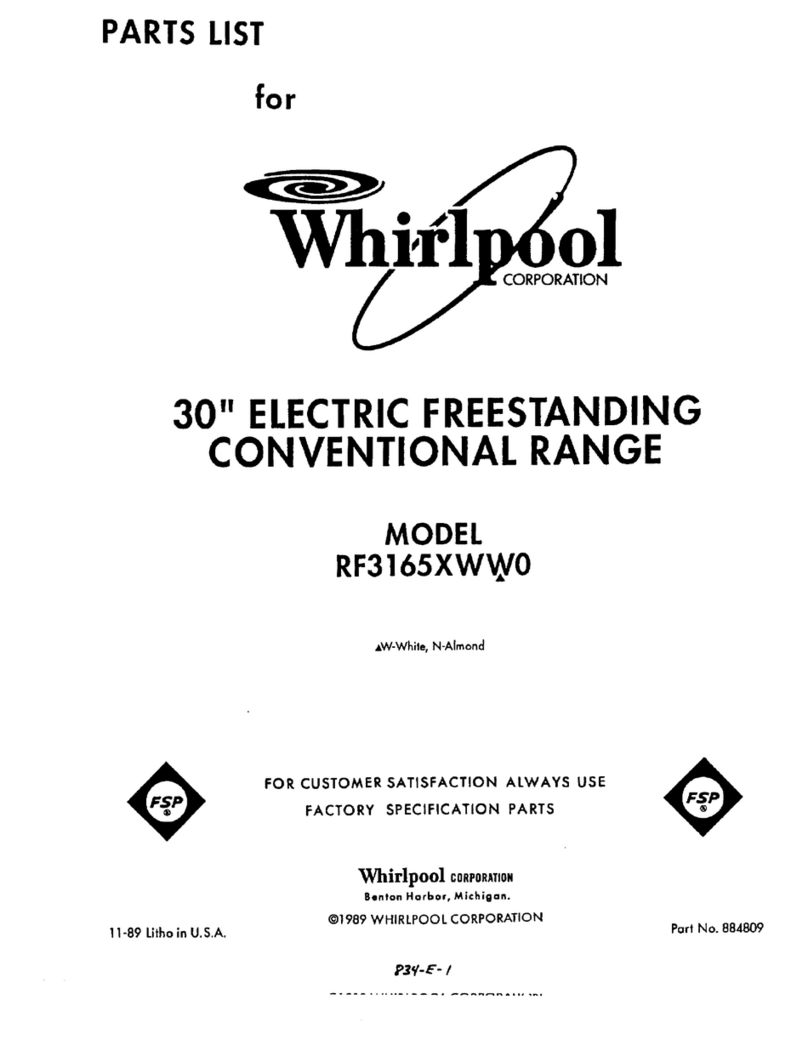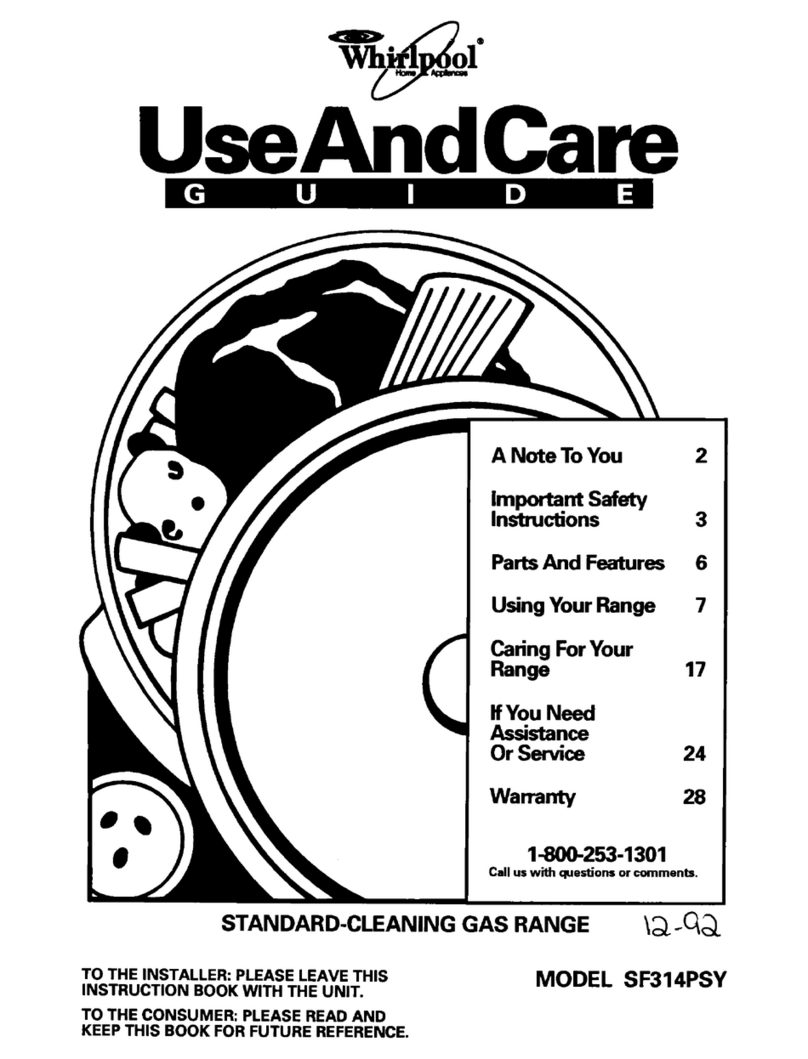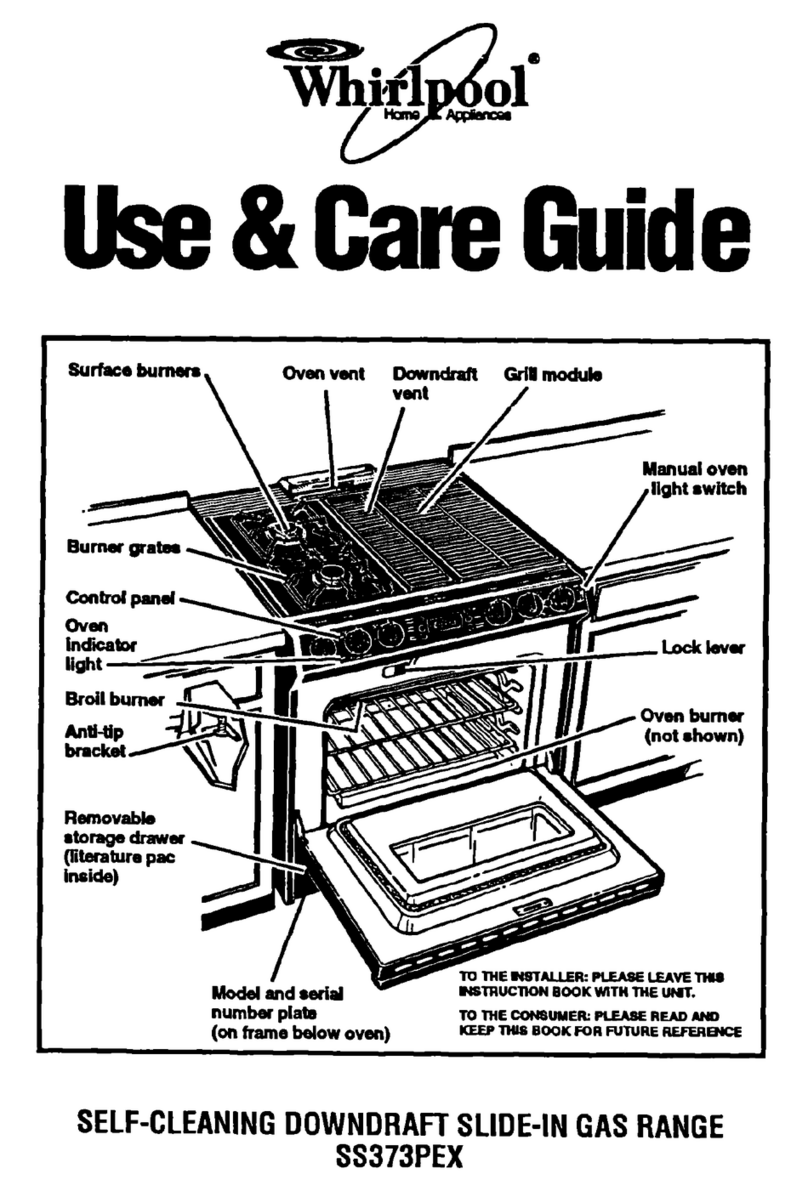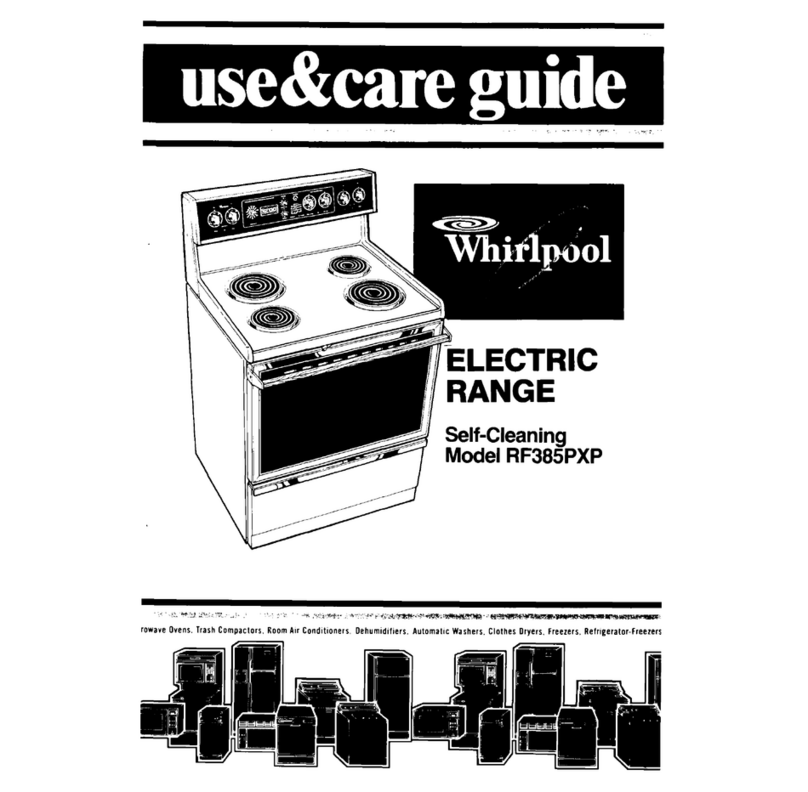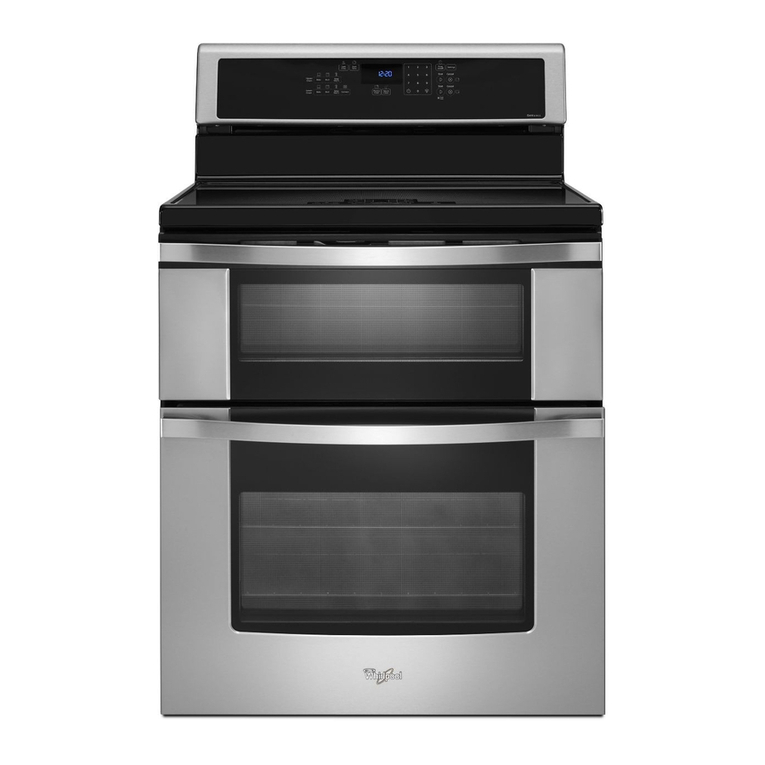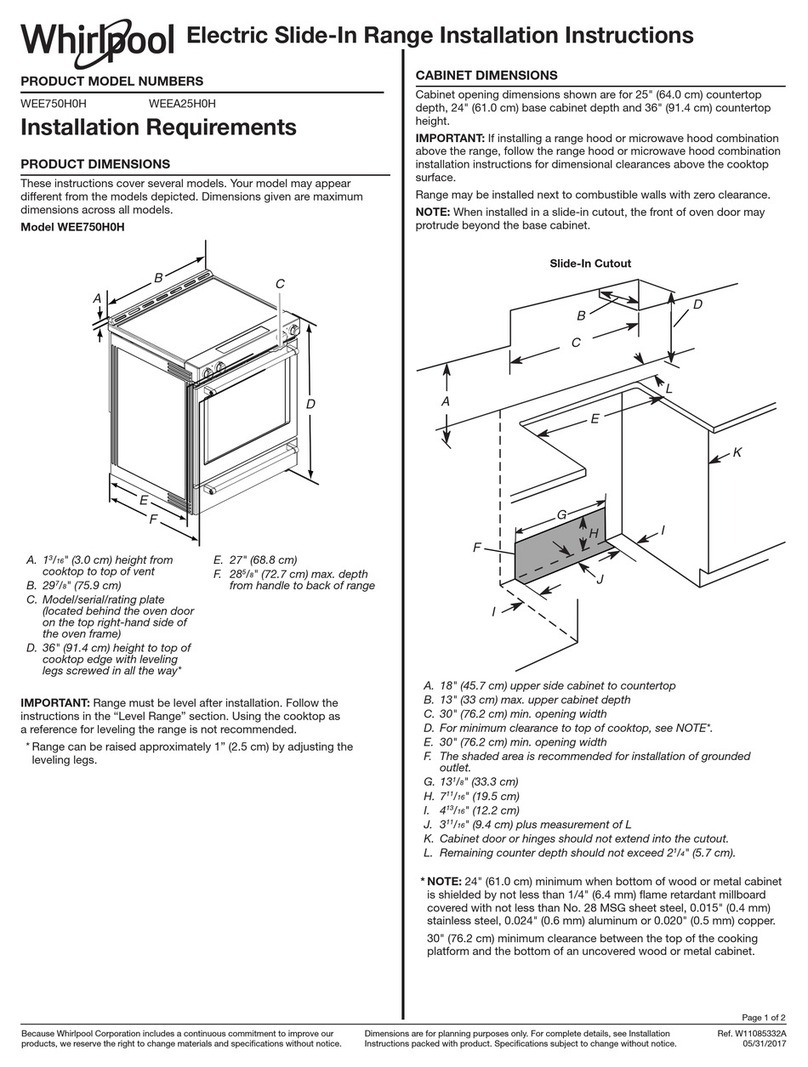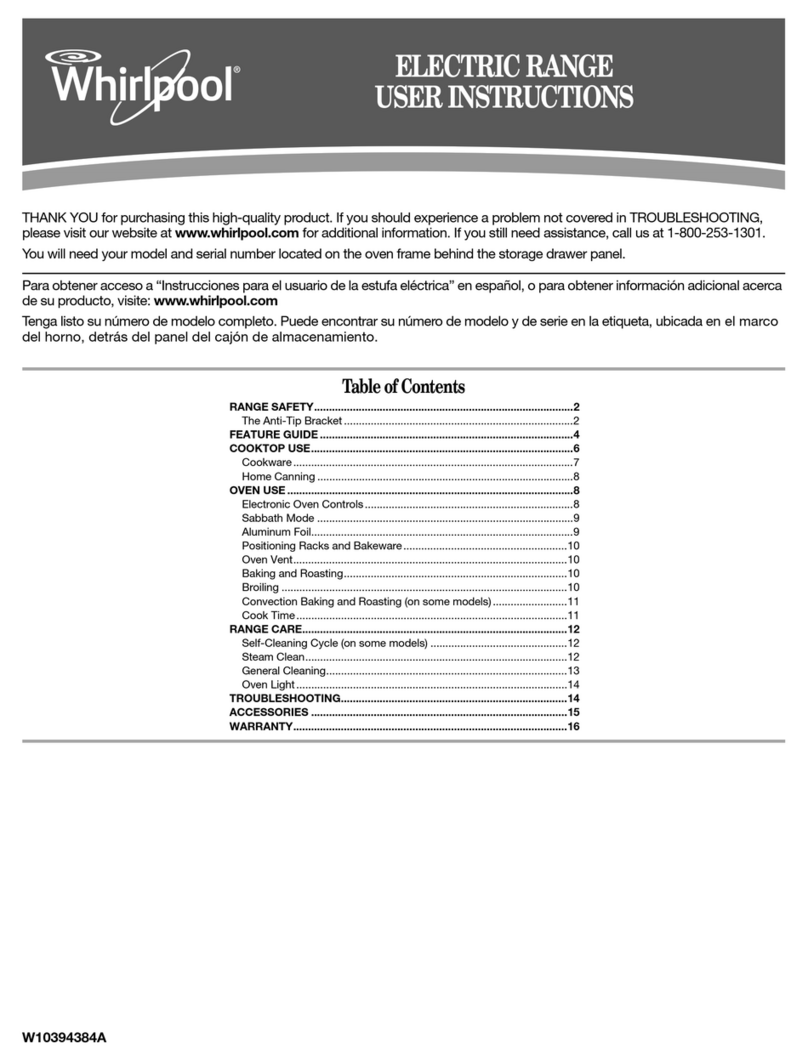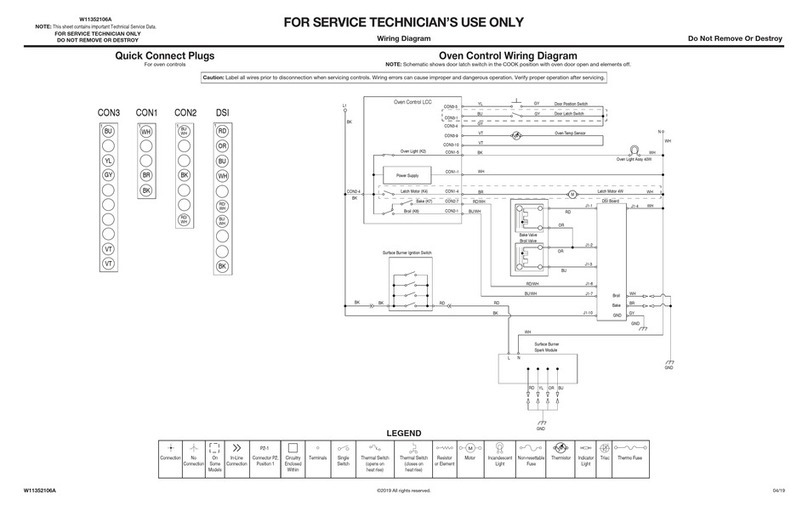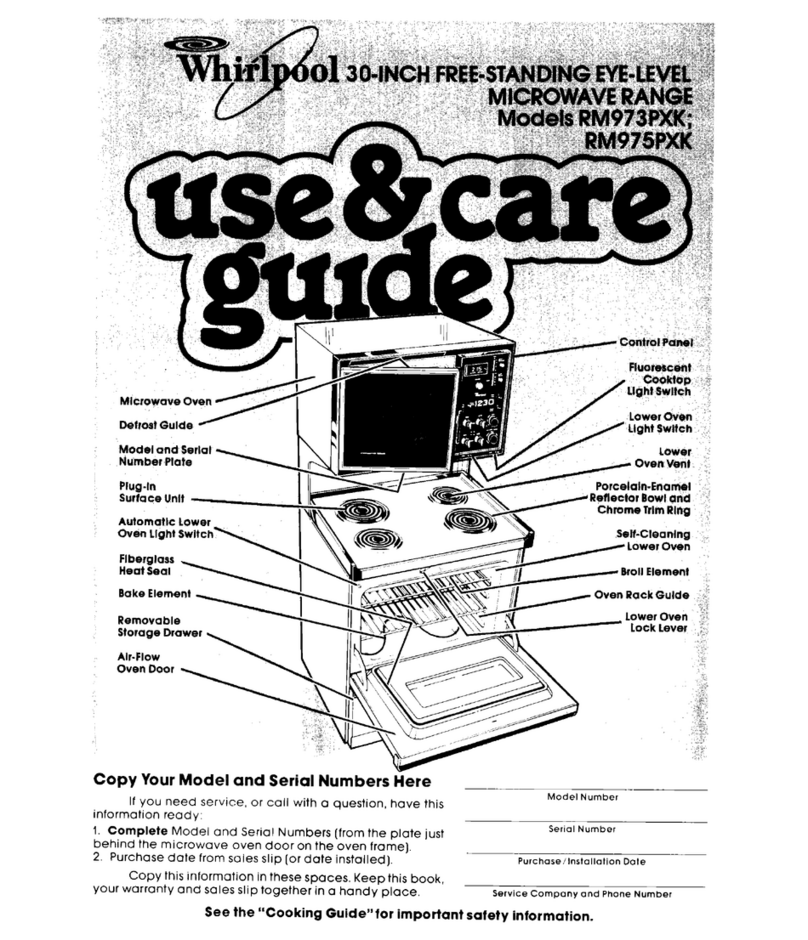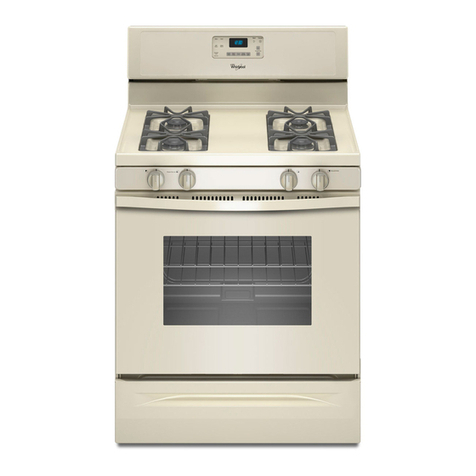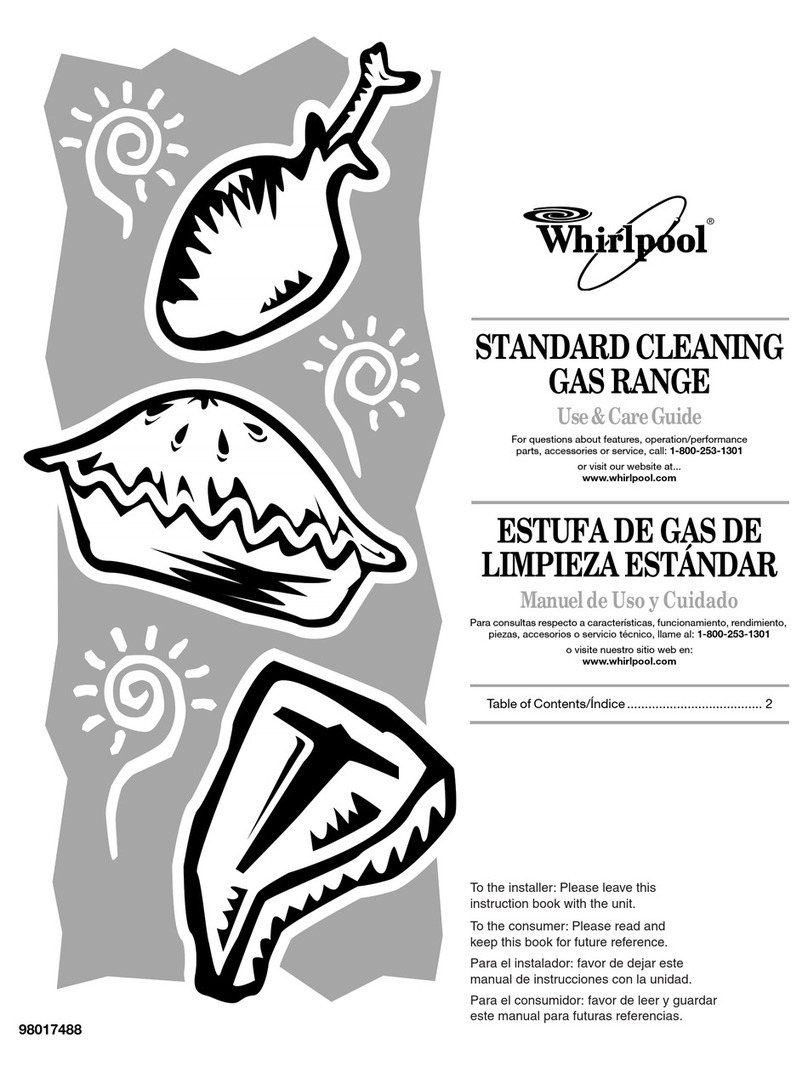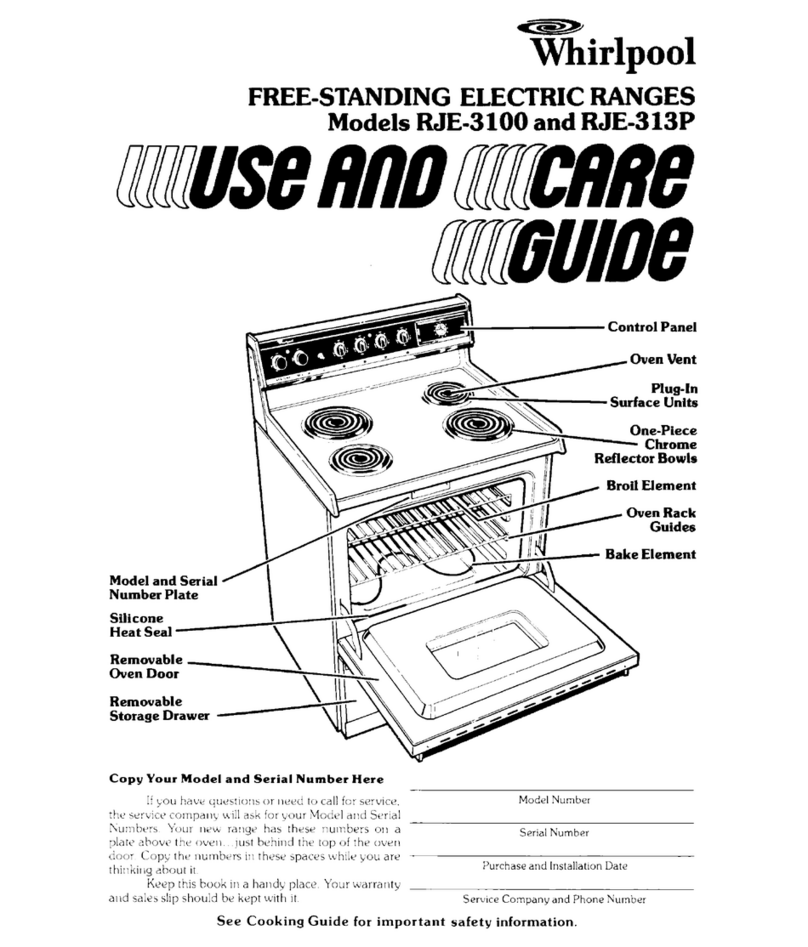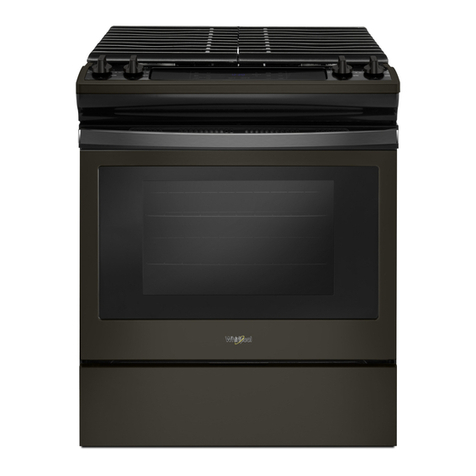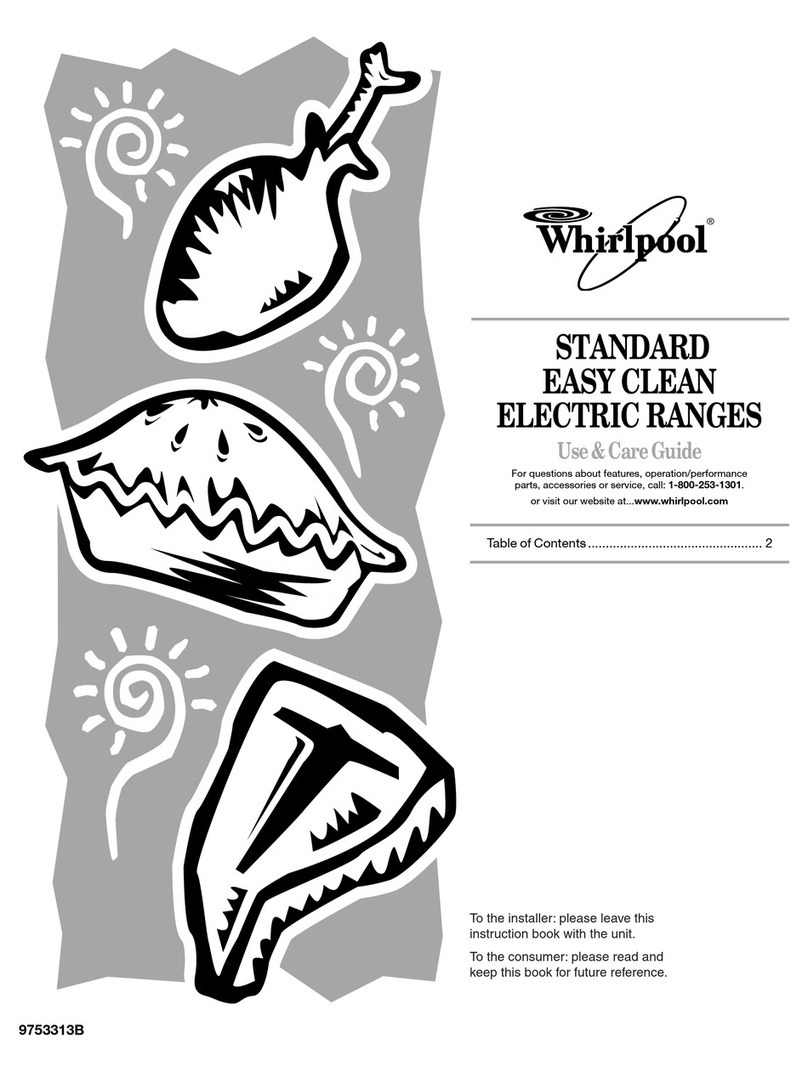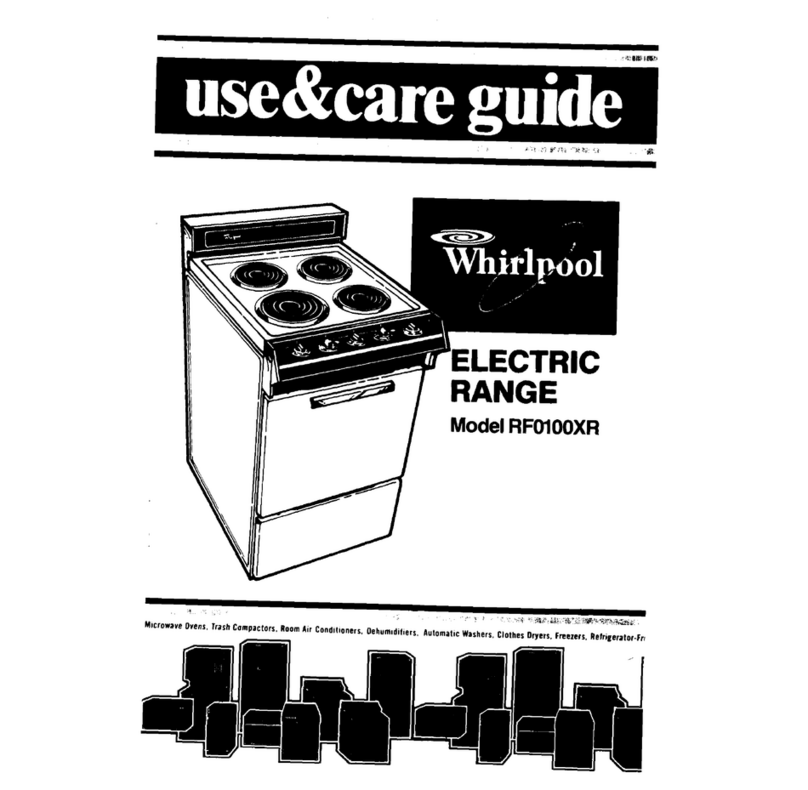Until you get used to the settings, use
the followlng as a guide.
For best results,
start cooking at the high setting; then turn
the control knob down to continue cooking.
SElllNG RECOMMENDED USE
HI
l
To start foods cooking.
l
To bring liquids to a boil.
Medium-high
l
To hold
a rapid boil.
l
To
fry chicken or
pan-
cakes.
Medium
l
For gravy, pudding and
(opposite
OFF) icing.
l
To cook large amounts of
vegetables.
Mediumlow
l
To keep food cooking
after
starting it on a
higher setting.
LO
l
To keep food warm until
ready to serve.
r
L
Solid element surface units
Solid element surface units are made of
heavy cast-iron to provide even cooking.
Each surface unit has a built-in protective
limiter
as
a safety feature.
The limiter senses uneven cooking
temperatures when:
l
A pan boils dry.
l
A pan is removed and
the
surface
unit is
left on.
l
The bottom of the pan is
too large or too
small for the surface unit. This will result in
longer cooking times.
l
The bottom of the pan
is rounded,
warped, ribbed or dented
and does
not
make full contact with the surface unit.
The limiter will automatically reduce the heat
level to provide even cooking temperatures
and to protect the surface unit.
NOTE: Solid element surface units stay hot
for a long time. Do not use the HI setting for
long periods of time or leave pans on hot
surface units when cooking is done. Burned
food and damage to the cookware could
resuft. You may want to turn the surface unit
off a few minutes before you finish cooking.
Before placing a pan on solid element
surface units for the first time,
heat on HI
setting for fnre minutes. The surface units
will give off smoke as the protective coating,
applied at the factory, finishes bonding to the
surface.
Bum and Fire Hazard
Be sure all control knobs are turned to
OFF and the Power On Light(s) is OFF
when you are not cooking.
Someone could be burned or a fire could
start if a surface unit is accidentally left
ON.
Cookware tips
l
Select a pan
that
is
about the same size
as the surface unit.
l
NOTE: For best results and greater
energy
efficiency, use only flat-bottomed
cookware that makes good contact with the
surface units. Do not use cookware with
rounded, warped, ribbed (such as some
porcelain enamelware) or dented bottoms.
You can, however, use the newer ccok-
ware available with slightly indented
bottoms or very small expansion channels.
This cookware is specially designed to
provide the good contact needed for best
cooking results.
Also, woks, canners and teakettles with
flat bottoms suitable for use on your
cooktop are now available in most stores
that sell housewares.
l
The
pan
should have straight sides and a
tight-fitting lid.
l
Choose medium to heavy
gauge
(thick-
ness) pans that are fairly lightweight.
l
The pan material
(metal or glass) affects
how fast heat transfers from the surface
unit through the pan material and how
evenly heat spreads over the pan bottom.
Choose pans that provide the best cooking
resutts.
l
Handles
should he made of sturdy, heat-
resistant material and be securely attached
to the pan.
